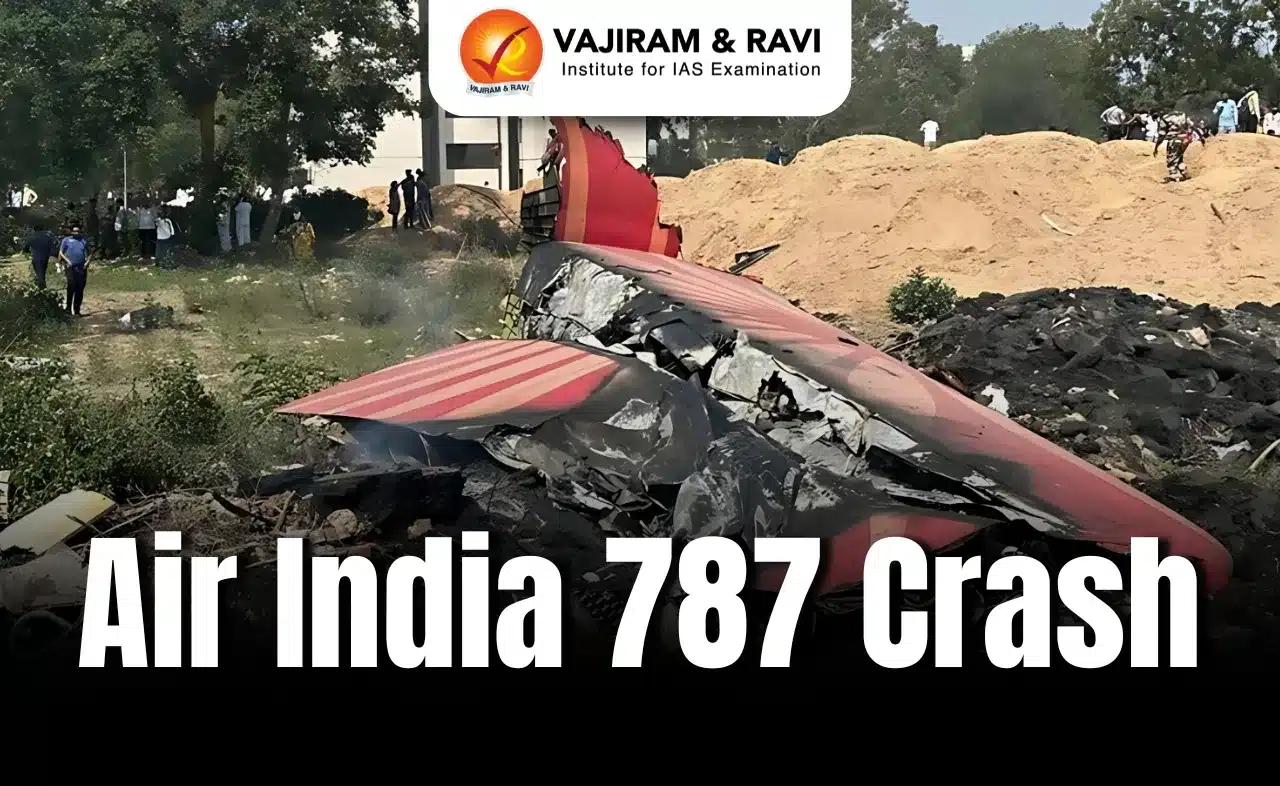What’s in Today’s Article?
- Military Space Doctrine India Latest News
- Need For a Space Security Doctrine
- India’s Key Developments in Space Security
- Conclusion: Towards a Space-Ready Military
- Military Space Doctrine India FAQs
Military Space Doctrine India Latest News
- Chief of Defence Staff (CDS) General Anil Chauhan announced that India is in the final stages of formulating a Military Space Doctrine, expected to be released within two to three months.
- A National Military Space Policy is also under development. This is an important step as the world is on the “cusp of an era” where space is becoming a key domain of warfare, necessitating preparedness through structured doctrines, research, and institutional frameworks.
Need For a Space Security Doctrine
- Rising Global Concerns Over Weaponisation of Outer Space
- In April 2024, Russia vetoed a UN Security Council resolution (drafted by the US and Japan) to prevent an arms race in outer space.
- UN has called for a legally binding instrument to prevent arms race in outer space, but Russia and China rejected the 2024 draft resolution.
- This follows fears of Russia developing nuclear anti-satellite (ASAT) weapons.
- Military use of space has been ongoing since Sputnik (1957), with increasing threats of space warfare and space-based defence systems.
- In April 2024, Russia vetoed a UN Security Council resolution (drafted by the US and Japan) to prevent an arms race in outer space.
- Militarization Trends: Space as the Fifth Operational Domain
- NATO declared space a fifth operational domain in 2019, reflecting its critical role in defence.
- Countries like the US and Russia have created independent space forces and formulated doctrines to secure space dominance.
- The failure of global consensus on responsible behaviours (e.g., the 2023 Working Group report) reflects growing mistrust among major powers.
- Geopolitical and Astropolitical Tensions
- India faces growing geopolitical and astropolitical tensions, especially with China and Pakistan.
- China’s space advancements, including the Space Silk Road and PLA’s restructured security forces (including Aerospace and Cyberspace), pose direct security challenges.
- Other Factors
- Rising threats such as orbital, kinetic, electronic warfare, and cyber threats necessitate resilient space-based systems.
- India’s expanding space capabilities demand clear institutional frameworks to integrate civil, commercial, and military space activities.
- Military space operations are critical for – Safeguarding national security; Addressing vulnerabilities of space-based systems; Tackling emerging space-based threats.
India’s Key Developments in Space Security
- Adherence to Space Norms
- India adheres to major international space treaties including:
- 1967 Outer Space Treaty (OST)
- 1968 Rescue Agreement
- 1972 Liability Convention
- 1974 Registration Convention
- Signatory to the 1979 Moon Agreement
- India is a member of the Inter-Agency Space Debris Coordination Committee (IADC) and follows the 2008 Debris Mitigation Guidelines.
- India adheres to major international space treaties including:
- India’s Key Developments in Space Security
- 2019 ASAT Test (Mission Shakti): India demonstrated its counter-space capabilities, joining the US, Russia, and China.
- 2010 – Integrated Space Cell: Enhanced coordination between the Department of Space and Armed Forces.
- 2018 – Defence Space Agency (DSA): Formed to address space-based military threats.
- DSA is playing a central role in: Drafting the military space doctrine; Building an integrated satellite communication grid; Identifying and countering threats to national security from both state and non-state actors.
- 2023 – Indian Space Policy (ISP): First formal space policy, although it lightly touches upon “national security”.
- 52-Satellite Constellation for Defence: The government has approved the launch of a 52-satellite constellation for intelligence, surveillance, and reconnaissance (ISR).
- 31 satellites to be built by the private sector
- Execution in partnership with ISRO and private players
- Aimed at bridging operational gaps and preparing for future threats
- GSAT-9 (2017): Used space diplomacy through the South Asia Satellite, strengthening regional influence (excluding Pakistan).
- International Partnerships: India is strengthening space cooperation with QUAD, France, and others.
Conclusion: Towards a Space-Ready Military
India’s ongoing reforms in the space sector and the development of military space doctrines and policies reflect a strategic shift towards embracing space as a crucial frontier for national security. These initiatives aim to build resilience, foster innovation, and integrate military, civil, and private capabilities for a robust space defence architecture.
Military Space Doctrine India FAQs
Q1. Why is India creating a Military Space Doctrine?
Ans. To address rising space-based threats and assert strategic preparedness in the rapidly militarizing space domain.
Q2. What is Mission Shakti?
Ans. India’s 2019 anti-satellite (ASAT) test demonstrating its capability to neutralize satellites, joining global space powers.
Q3. What challenges does India face in space?
Ans. India faces growing astropolitical threats, especially from China’s military space advancements and space-based warfare capabilities.
Q4. What role does the Defence Space Agency play?
Ans. It drafts the doctrine, builds space systems, and coordinates responses to space-based military threats.
Q5. What is the significance of the 52-satellite constellation?
Ans. To boost India’s surveillance, intelligence, and reconnaissance capacity in collaboration with private players and ISRO.
Last updated on June, 2025
→ UPSC Notification 2025 was released on 22nd January 2025.
→ UPSC Prelims Result 2025 is out now for the CSE held on 25 May 2025.
→ UPSC Prelims Question Paper 2025 and Unofficial Prelims Answer Key 2025 are available now.
→ UPSC Calendar 2026 is released on 15th May, 2025.
→ The UPSC Vacancy 2025 were released 1129, out of which 979 were for UPSC CSE and remaining 150 are for UPSC IFoS.
→ UPSC Mains 2025 will be conducted on 22nd August 2025.
→ UPSC Prelims 2026 will be conducted on 24th May, 2026 & UPSC Mains 2026 will be conducted on 21st August 2026.
→ The UPSC Selection Process is of 3 stages-Prelims, Mains and Interview.
→ UPSC Result 2024 is released with latest UPSC Marksheet 2024. Check Now!
→ UPSC Toppers List 2024 is released now. Shakti Dubey is UPSC AIR 1 2024 Topper.
→ Also check Best IAS Coaching in Delhi






















